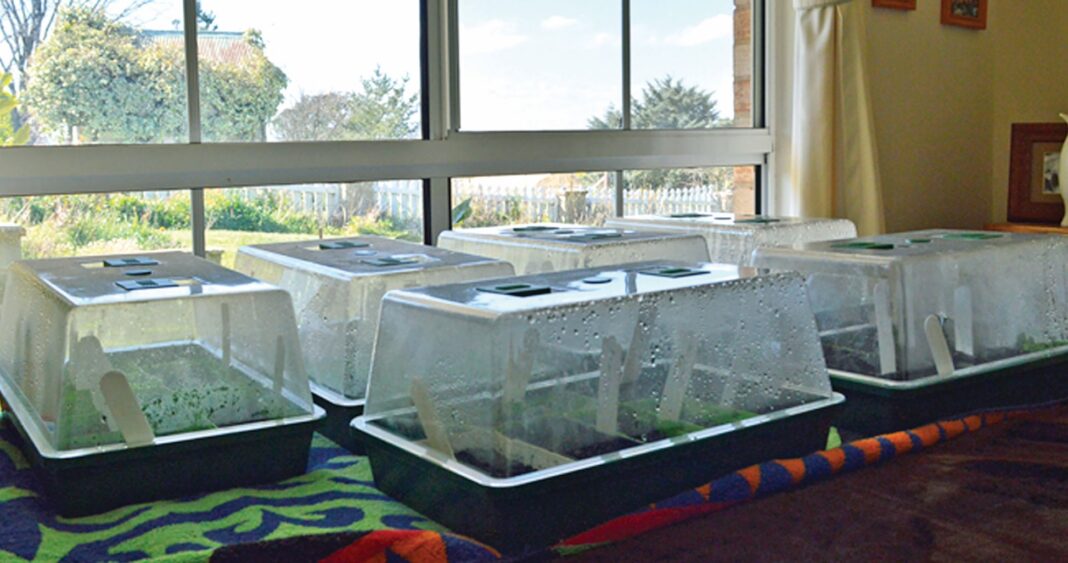Propagation is about making new plants from old, whether via cuttings, seed sowing, division, layering, grafting, tissue culture, and more. Different propagation methods suit different plant types (do your research beforehand).
Cuttings, seed sowing, division and layering are popular methods of propagation, which can easily be carried out in any home garden. Propagating your own means you can grow a wide range of plants, many of which aren’t readily available elsewhere.
Home propagation also saves time, money and resources, not to mention being a whole lot of fun!
Growing plants from seed
Many plants can be propagated by sowing seed. Seed sowing has many benefits, such as maintaining vigour and diversity, and the ability to get hundreds or thousands of seeds from a single pod or capsule.
There is a wide range of seed sowing methods and pre-treatments you can carry out, which are dependent on the type of plant being propagated, where it originates from, and when/where it is being sown. For example, cold stratification (treatment to break seed dormancy using your fridge for instance) and scarification (scratching seed surface to break dormancy such as using sandpaper or hot water treatment), are two commonly used pre-treatment techniques.
Growing plants from stem cuttings
A wide range of plants can be propagated via stem cuttings, such as evergreen and deciduous shrubs. Stem cuttings are a clone of the original plant and can be taken using softwood (new growth), semi-hardwood (usually in late spring) or hardwood material (dormant during winter). Cutting lengths can vary depending on the type of cutting, the plant variety being used and the distance between nodes (growth points).
Softwood and semi-hardwood cuttings require reliable bottom heat and humidity for success. Hardwood cuttings generally require neither bottom heat nor humidity.
The propagation mix used for producing cuttings is also critical to success, and needs to be well drained and aerated, as well as having the ability to maintain stable moisture levels.
Propagating plants through division and layering
Clone, or asexual propagation, can also be carried out by dividing or layering chosen plant varieties at the appropriate time of year.
Plants which reproduce via bulbs, corms, rhizomes or runners, etc., can be readily dug up and divided to turn one plant into many. Propagation via layering is generally carried out while the material is still attached to the original plant.
More stories:



